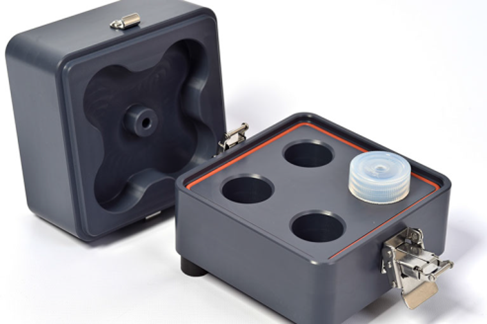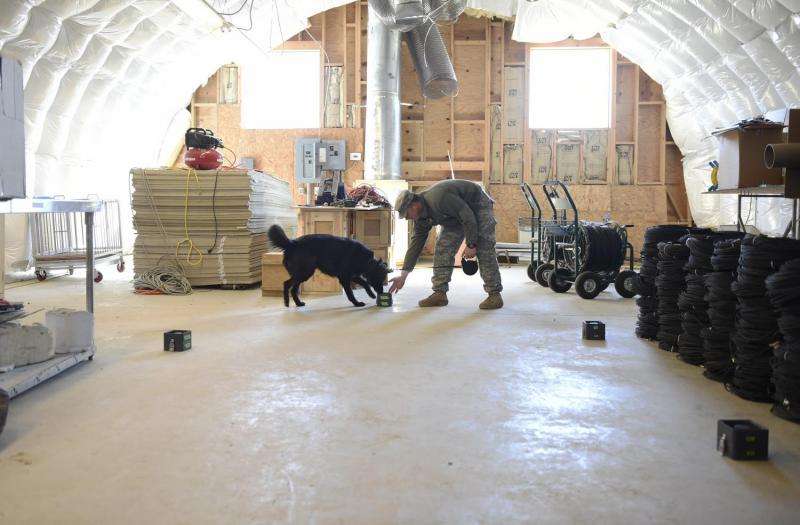Chemist develops device to train canine units on odor detection

Man's best friend returned to the silver screen this June in the film "Megan Leavey," a story based on the true events about young Marine Megan Leavey and her combat canine, Rex. The film shines light on the importance of canine units throughout the military, whether it is aiding soldiers in combat situations or using their keen sense of smell to detect explosives in the field.
Coincidentally, Dr. Lauryn DeGreeff is a chemist at the U.S. Naval Research Laboratory who specializes in canine detection of explosive materials, studying volatile compounds that make up odors in explosives that canines can locate. DeGreeff's work at NRL uses chemical analysis to better understand the canine's ability to locate odors and applies this knowledge to improve their training.
DeGreeff has used this knowledge to develop the Mixed Odor Delivery Device (MODD), a safe, low cost, and time effective way to train the canines on the odor of homemade explosives.
"Homemade explosives are often made up of simple, binary mixtures of commercially available materials," says DeGreeff. "While the individual components are safe to handle, the mixtures are explosive and come with a number of safety restriction for their use, storage, and handling. These safety hazards seriously limit the frequency of which canines can train on the mixed explosives."
The MODD eliminates the safety problem by integrating multiple compartments within the device, each able to hold a different ingredient of the explosive without the danger of mixing. The separated components are enclosed in the MODD allowing the odors to diffuse from the individual vials. As they move through the device, the individual components are forced to mix, ultimately providing a mixed odor representative of the actual mixed explosive on which the canine can train.

When speaking of the differences between current explosive detecting instruments and explosive detection canines, DeGreeff says, "Most of the instruments that we have cannot match a canine's sensitivity or selectivity."
DeGreeff also takes note of a canine's unique ability to follow an odor to its source using concentration gradients, something that instruments cannot do.
DeGreeff stresses the importance of properly training explosive detection canines to address concerns not only throughout the military, but also for civilians who are concerned with public safety.
"Safety in public places is on many people's minds these days," says DeGreeff. "Commonly used explosive detection instruments were not developed for the identification of these homemade explosives. Canines, however, can easily be trained to locate such materials, and the MODD can be used to assist in properly training canines to homemade explosives in the field."
Odor detection canines – and their proper training – remain an important asset to our military forces and police departments. With devices like DeGreeff's MODD, canine units will continue to train to their highest proficiency.
Provided by Naval Research Laboratory


















